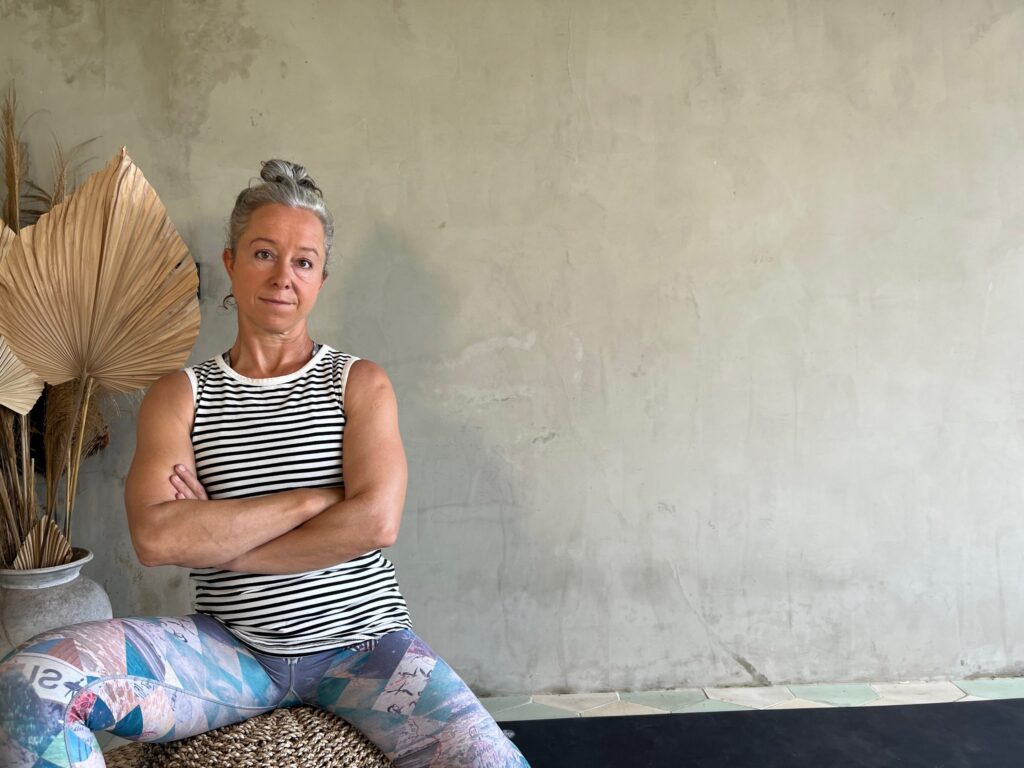If you’re among the 1 in 3 women with pelvic floor issues like sneeze-pee, pain, or prolapse, you’ve probably tried Kegels. Anything to get rid of that “argh” feeling when you run/cough/laugh/trip over the dog, right? And if you’ve been wondering why your symptoms still aren’t improving, you’re likely not alone.
As I was mapping out my new pelvic floor courses (click here to read more about Pelvic Floor+ Upper Body and Pelvic Floor+ Lower Body), I was SWAMPED with messages from women who were frustrated with slow progress, despite diligently doing their Kegels.
The thing is, these traditional pelvic floor exercises just don’t work for many people. There’s a place for them. But as with many of our aches and pains, pelvic floor health is about how your whole body moves. Doing a gazillion Kegels before breakfast doesn’t change how your pelvic floor is loaded all day long. Which is too bad – they seem like such a simple fix!
So if you’re trying to heal your pelvic floor with Kegels alone, you might not see the results you’re hoping for. Here’s a run-down of why Kegels might be coming up short, and what you can try instead.
Why Kegels Might Not Be The Best Way To Strengthen Your Pelvic Floor
Pelvic floor issues can show up as pelvic pain, hip pain, diastasis recti, prolapse, and the dreaded sneeze-pee. These are common after childbirth or menopause, but can affect anyone (including 30-year-old me!).
Like all muscles, your pelvic floor muscles need to be strong enough to respond to whatever load you put on them. If the muscles are overloaded, they fail. Enter incontinence, pain, and potentially, prolapse. So that means we need to make sure they’re strong, but also know how to make sure we’re not overloading them.
What’s more, to work well, pelvic floor muscles need to be able to produce force to keep stuff in our bodies both when they’re shortened AND when they’re lengthened. If we don’t move our bodies in the right way, these muscles get stuck in short, tight mode. They can’t manage the long, strong part of the equation, so when we sneeze or jump, and they naturally lengthen, they fail.
This is also why Kegels aren’t the answer. By repeatedly squeezing these tiny muscles, you’re actually making them shorter and tighter, which is (often) exactly the problem you’re trying to solve.
Start healing your pelvic floor, building a functional core & caring for your spine (for free!)
Better Ways To Build A Happy Pelvic Floor (That Aren’t Kegels)
Too much sitting, not enough walking and squatting, and poor pelvic alignment are common culprits in weakening and shortening our pelvic floor muscles. Basically anything that gives you a lazy butt and stiff hips. With so many moving parts involved, a one-muscle solution like Kegels doesn’t really make sense.
Instead, we need to look at how we move our whole bodies. The goal is to get the pelvic floor muscles to work well through their entire range of motion, and to manage the load we’re putting through them. This means we need to avoid movements that shorten and tighten the pelvic floor, like sitting with a tucked pelvis or walking in heels.
Managing the load is a bit more complicated. Running, jumping and lifting heavy stuff should be fine if your pelvic floor is healthy, but may be too much if it’s weak. The real issue is long-term overloading, which can happen with too much pressure from belly breathing, straining on the toilet, “bearing down” when we lift stuff, and of course having a baby. Aside from the last example, these are all habits we can adjust with a bit of practice.
Here are 5 steps to nurturing your pelvic floor using whole-body movement skills, habits and practices (none of which are Kegels).
Step 1. Check Your Ribcage Positioning
Let’s start from the top down! This really is a magical little wellness hack. I know it sounds too simple, but holding your ribcage differently can immediately change the movement patterns that may be causing your pelvic floor issues. As a bonus, it’ll probably also improve your core function, decrease hip and back pain, and even improve your breathing. You can find out more about how to optimize ribcage alignment in this article on spinal health.
I’ve also just launched Ribcage Magic, a 5-part video series that walks you through why ribcage position is foundational to healing your pelvic floor. You’ll also discover a simple self-check for ribcage alignment and tips on finding the ideal rib position for you.
Step 2. Engage That Core – Sometimes
Alongside Kegels, the other bit of advice you probably see a lot is to “engage your core.” Learning to properly engage your core means you can avoid putting too much pressure on your pelvic floor when you lift something heavy. But that doesn’t mean constantly bracing, sucking in or holding tension.
We need to be able to move and adapt to whatever load or movement we’re dealing with – whether that’s lifting a heavy bag of rice down from a high cupboard, or picking up a small child from the floor. We want to build strength in our core muscles so they can respond when we need them to, and then let go of constant tension. So think about softening your belly, and letting your core relax and respond.
Step 3. Work On Your Hip Mobility And Alignment When Sitting
Did I mention that sitting too much isn’t great for your pelvic floor?! Sitting in a hunched over position shortens the pelvic floor muscles. It’s also a fast track to stiff hips.
Instead, practice sitting with a neutral pelvis and make sure you get up frequently to prevent tightening. Try skipping chairs entirely (like I do!) and sit on the floor. Improving your hip mobility so they can comfortably rotate, flex and extend can also help support your pelvic floor. Working towards a squat with a full range of hip mobility will lengthen the glutes, and improve hamstring and adductor length and strength, so you can sit and stand in a more pelvic-friendly position.
Start healing your pelvic floor, building a functional core & caring for your spine (for free!)
Step 4. Release & Relax
Feeling ‘overwhelmed’ is the number one comment I get from people who are trying to add more movement to their lives. And no wonder: modern life offers very few opportunities to slow down. Relaxing with gentle movement (like this rolling stretch) is a great way to release tension.
Holding too much tension in your upper body is especially challenging as it makes it tricky to breathe properly, which puts too much pressure on your pelvic floor. So make it a priority to work on releasing your upper back, ribs and shoulders.
And of course, many of us have a habit of holding tension in our pelvic floors too. In fact, our pelvic floor muscles respond to stress automatically. In fact, some studies have shown that even watching scary movies can make our pelvic floors tighten up.
Stress is a big deal for our pelvic floors and that’s one reason that slow, gentle movement work can be a key tool in pelvic floor healing (and one of my favourite Kegel alternatives).
Step 5. Make Walking A Daily Practice
If I could put one message on a big billboard by the side of the road that everyone would see, it would be this: WALK MORE! Walking is probably the single best exercise for your pelvic floor – as long as you’re using good technique (yes, believe it or not, there is a walking technique!). Nothing can totally counteract hours of sitting in a chair, but walking is definitely going to help more than Kegels.
At least, walking in a way that allows your hips to extend behind you will lengthen and strengthen your pelvic floor. I don’t imagine that many of you are going hiking in heels, but footwear matters. Even conventional sneakers and hiking boots have raised heels, and that matters for your walking technique and the pelvic floor impacts. Wear totally flat shoes and work towards minimal shoes that will naturally strengthen your feet, and allow a better walking technique.
Finally, remember to ease off on the Kegels (unless you have a really good pelvic floor physio).
I know this is a lot of info, but you don’t have to do it all at once. Even changing one small habit can make a huge difference. If you’re ready to begin your journey towards a happier pelvic floor, my new video series, Ribcage Magic, will help you get started.
Oh, and if you’re interested in that pelvic floor course I mentioned earlier – get all the details right here!







